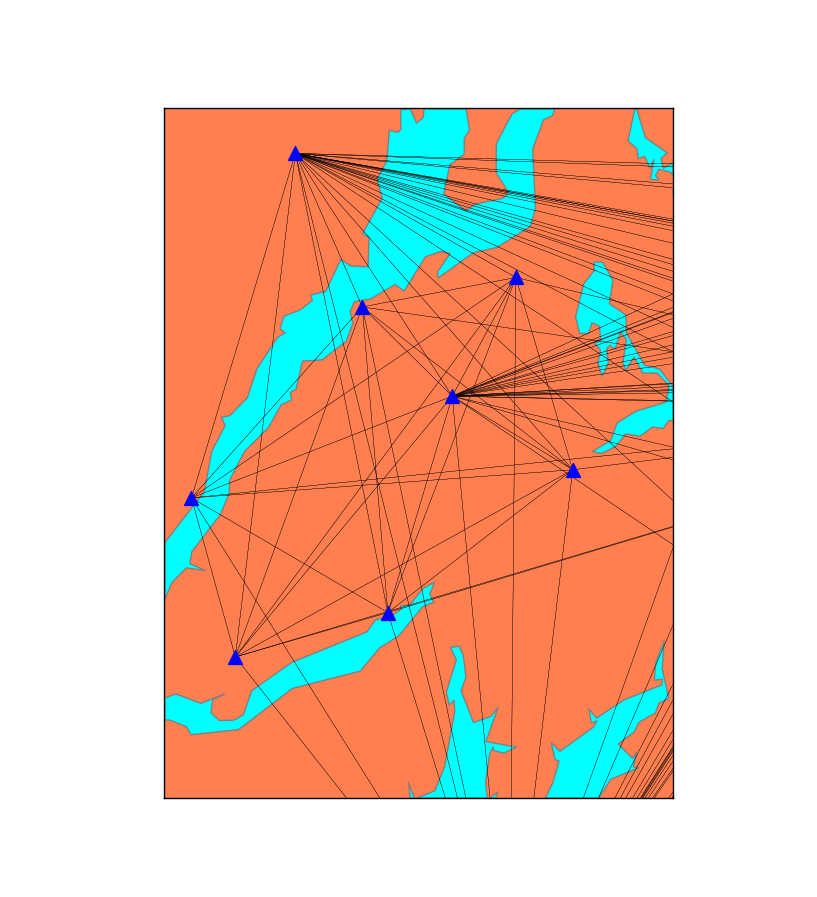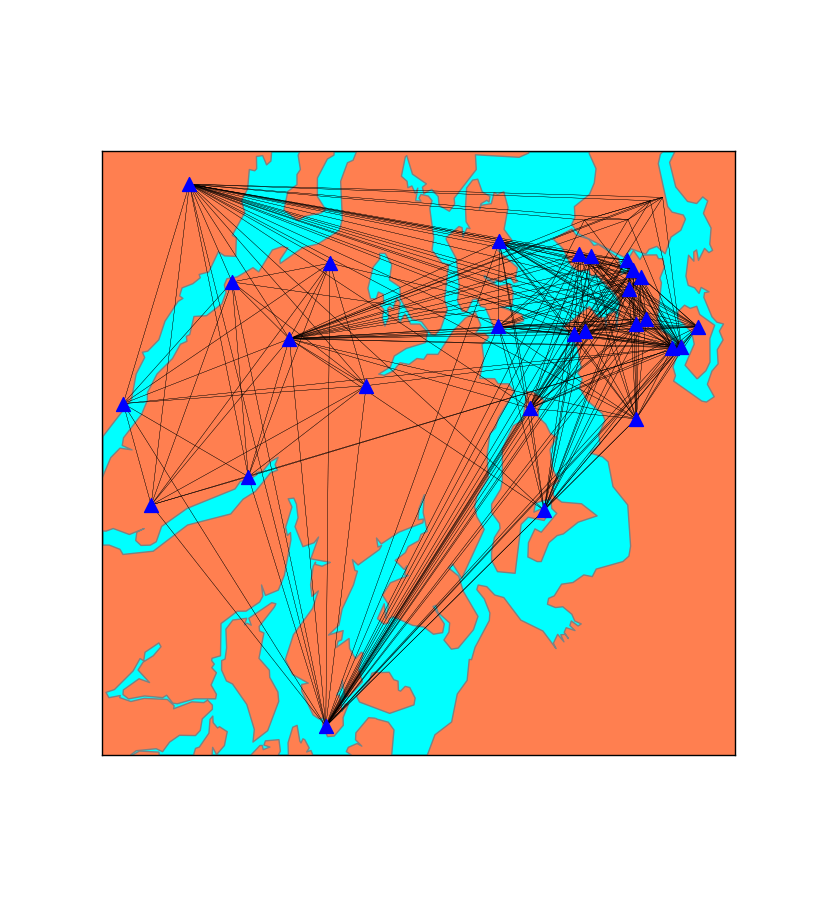Tessa

Tessa is a student at Washington State University currently completing her research at University of Washington under Dr. Alex Hutko.
In this project I will be working with Dr. Alex Hutko and Dr. Renate Hartog as well as others in the Pacific Northwest Seismic Network(PNSN) to collect ambient noise data in urban environments to analyze the velocity structure of the Seattle and Tacoma basins. Creating a more accurate velocity structure map will help to constrain models that currently show that the Tacoma basin could amplify seismic waves from a megathrust earthquake along the Cascadia Subduction Zone. My roll in this research will be to communicate with potential site locations and to be a part of a team to deploy and retrieve seismic stations. I will also be responsible for collecting the data from the data loggers, converting them, assessing each site based on noise characteristics, running the cross-correlations, and determining when to move the stations based on early results. I will work with my mentors to interpret the velocity structure of these basins and their importance for anticipating seismic risk.
Week 7
July 22nd, 2019
Week 7 already! We are starting to dive into analyzing the data we have collected, and has brought a new set of challenges. I feel like I was more familiar with the concepts in the first part of the project and we have now reached an area that I do not have experience with. We have been running cross correlations and noise filters on the data and will also be doing dispersion curves. This part of the project also comes with more complex codes that I have struggled with. But, through this I have learned, with help, how to troubleshoot issues using online forums and use online tutorials to understand programs like obspy. I have also been reading the textbook we were given during orientation, An Introduction to Seismology, Earthquakes and Earth Structure by Seth Stein and Michael Wysession, to understand what our codes are doing, why and what it tells us. I have attached a figure of one of the cross correlations I have made.
On a different note, this weekend I got out of Seattle with some friends and went camping in the Mt. Hood National Forest and checked out some awesome hot springs! It was great to get out of the city and explore with friends. 
Week 5
July 8th, 2019
Happy 4th of July! It’s crazy that we’re already halfway through the summer! I was hoping to have a cross correlation example ready to share but we’re not quite there due to being out of the lab most of last week for field work. I will do a separate post once I get there.
As for the other part of this week’s homework assignment, I believe that are two papers that are very important for this project. The first paper, High-Resolution Surface-Wave Tomography from Ambient Seismic Noise by Nikolai M. Shapiro et al., outlines the passive noise method that we are using and how it is useful in areas where active seismic sources such as explosions are impossible and earthquakes are infrequent. These parameters perfectly fit the Seattle and Tacoma basins however large bodies of water and freeways introduce complications in the placement of seismometers since this method assumes that noise is coming from all directions. This paper also talks about how this method can get better resolution by using each station as a source instead of using an earthquake which may be very far away. Using this same idea we can target different depths and wavelengths using the spacing of the stations. The other paper that I have chosen, Basin Shear-Wave Velocities beneath Seattle, Washington, from Noise-Correlation Rayleigh Waves by Andrew A. Delorey and John E. Vidale, is important for its discussion on the importance of studying sedimentary basins and the specifics of the Seattle basin. This paper also shows the application of velocity structure models, like the one we will be trying to make for the Tacoma basin, for determining expected amplification and ground shaking maps that can highlight vulnerable areas and help with earthquake preparedness.
Citations:
Shapiro, Nikolai M, Michel Campillo, Laurent Stehly, and Michael H Ritzwoller. "High-resolution Surface-wave Tomography from Ambient Seismic Noise." Science (New York, N.Y.) 307.5715 (2005): 1615-1618. Web.
Delorey, Andrew A., and John E. Vidale. "Basin Shear-wave Velocities beneath Seattle, Washington, from Noise-correlation Rayleigh Waves." Bulletin of the Seismological Society of America 101.5 (2011): 2162-175. Web.
Week 4
July 3rd, 2019
This post is a bit late because we have been out of the lab the past 3 days with field work. Last week I started playing around with a mapping code that I used to make the ray path maps that are attached. This process started very slow with going through each line of the code learning how to read python then jumping in to find a bug in the code. Facing a new challenge like this was frustrating at times but struggling through the issues helped me to understand how the logic of the code works and how to use a method to go through each step to find an error. The maps that were created with basemap. Since we are using volunteer sites making these maps helps us to determine what locations give us the best configuration.


Week 3
June 25th, 2019
This week we had the assignment to develop and practive an elevator speech. I put off this assignment a bit because, I think like most people, I don't like hearing my voice recorded, but I eventually got to it and it ended up being really helpful. I realized that I have already been practicing doing an elevator speech when talking to homeowners for station deployments and when sharing with friends and family when they ask what I'm doing this summer. However, having to write out what I wanted to say forced me to confront some parts of the project that I was fuzzy on and had to learn more about and focus on what farts of the project are importent to get the why and how accross. I think developing this skill is important to prevent getting flustered while trying to convey something I am excited about and face what I may not fully understand.
Week 2: Poking Data with a Stick
June 14th, 2019
This summer, we will be collecting background seismic noise and doing cross correlations to interpret the data. We are currently in our third round of deployments of our 6 broadband stations. One of the strengths of using background seismic noise in this area is that the Seattle basin is covered by urban environments so there are many choices for locations in and around the basin. One of the drawbacks is the large amount of water in the Seattle area. Unfortunately, we cannot put stations in the middle of Puget sound or Lake Washington. As we move to the Tacoma basin the urban area is smaller than Seattle which may pose issues for getting volunteers to host sites but the map of volunteers looks pretty good so far. Since we are collecting our own data this means that we process the raw data as it comes in. This week I learned how to download and backup the raw data from some of our previous stations and the next step is to process it.
A skill that I will be focusing on developing during this internship will be to use software and statistics for data analysis. Coming into this internship I know that the computer science side of this will be my steepest learning curve. I would like to get to a point that I can not only understand what I am doing but be able to work independently, work through issues I am having and anticipate and take further steps on my own. This skill is important to me because I would like to be able to use it more in my research back at my home university and I believe it is an important skill to have in this field. I am currently working on this skill by using basic commands in the terminal to work with raw data and I try to solve issues on my own before going to a mentor.
 We’ve had some gorgeous sunny days in Seattle so I’ve tried to get of the PNSN basement and get outside for a bit every day 😊
We’ve had some gorgeous sunny days in Seattle so I’ve tried to get of the PNSN basement and get outside for a bit every day 😊
Media Storm
June 11th, 2019
This first week has also involved a media storm of interviews at PNSN and on sites as we spread the word to get volunteers. We need help from community members to get locations to place seismic stations so we can get complete coverage of the basins. We have had great help from news stations in the area who have done stories to help get volunteers for this project and others that will be in the Seattle area later this summer (Harvard and Boise State). Here is one story that was done by Ted Land from King5 News who came to my house when I was setting up one of the stations to show a bit of the setup process and why it is important to get volunteers.
Week 1
June 11th, 2019
These past two weeks of orientation and my first week on my project feel like they have gone by in a blur! It has been fantastic to meet so many interesting people at orientation and at the Pacific Northwest Seismic Network (PNSN). This week we got straight to work taking down the seismic stations from the last round of deployment and deploying 3 more with the last 3 to go out this week.
Project Goals
1/3 Goals:
1) Learn how to set up instrument package from field techs.
2) Deploy and retrieve stations. Help site next 2-3 rounds of station locations.
3) Learn how to download and convert data from data logger.
2/3 Goals:
1) Deploy and retrieve stations.
2) Learn to run noise analysis and cross-correlation scripts, make recommendation for
when to move stations.
3) Run early inversions to identify basin boundaries and help target next round of station
Locations.
3/3 Goals:
1) Decide when to and deploy & retrieve stations.
2) Compare noise characteristics between stations and suggest a weighting scheme.
3) Submit AGU abstract
4) Present results at informal seismo-lunch at UW and fall AGU.
Here are some personal goals related to the research work that I would like to check in on my progress on these when I check in on the project goals
Work on communication skills through the blog (hi!), working with community members to setup install/demob appointments and asking questions from the experts (scientists, field techs and communication pros at PNSN).
Become proficient working in python and using programs to interpret data
Time management and prioritize! Stay on top of the work but also take a break when I need to.
Explore different areas of seismology and possible graduate school options
Get out and explore the Seattle region and especially the UW area. Participate in community and PNSN events.


